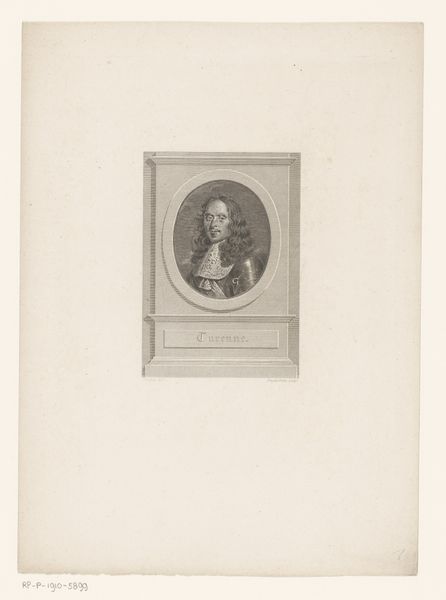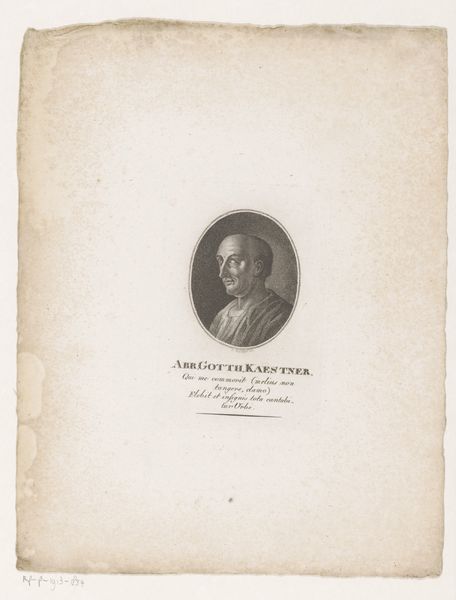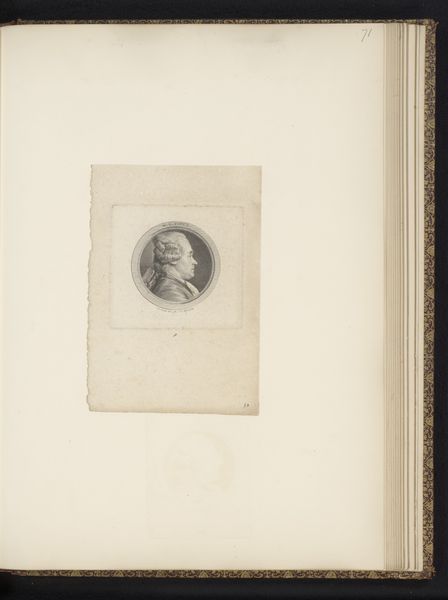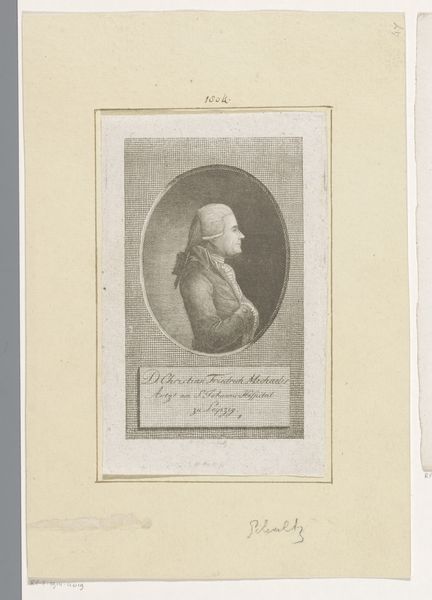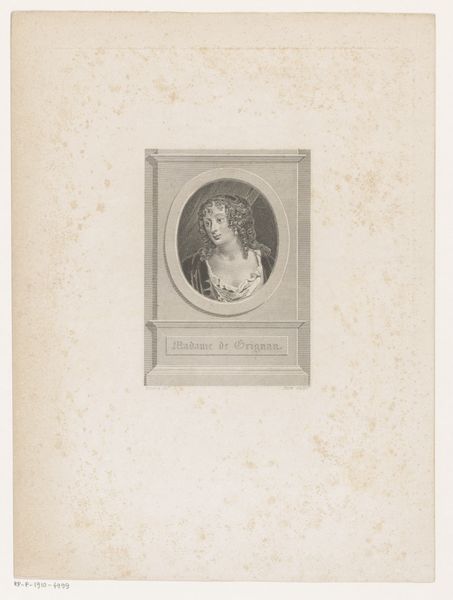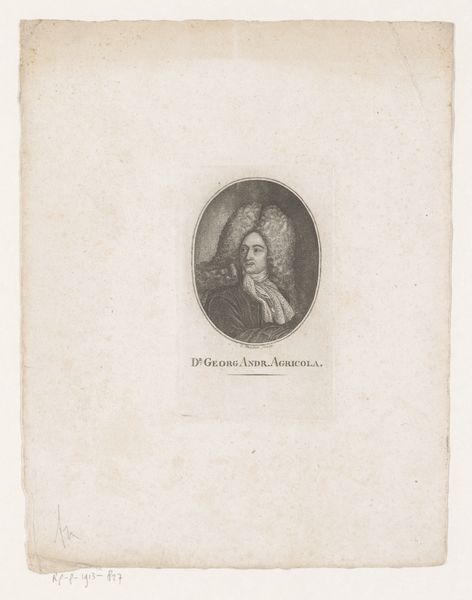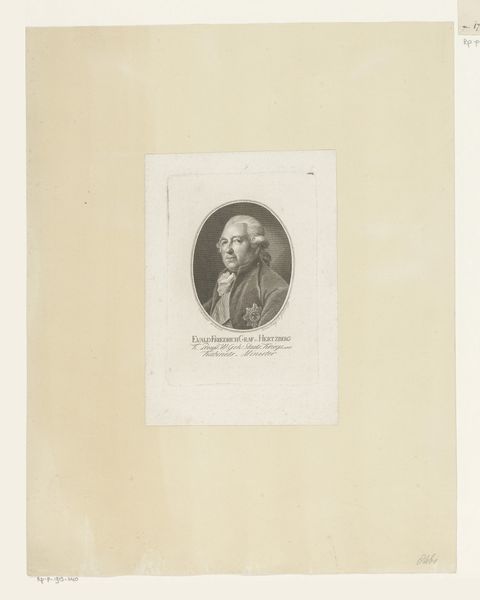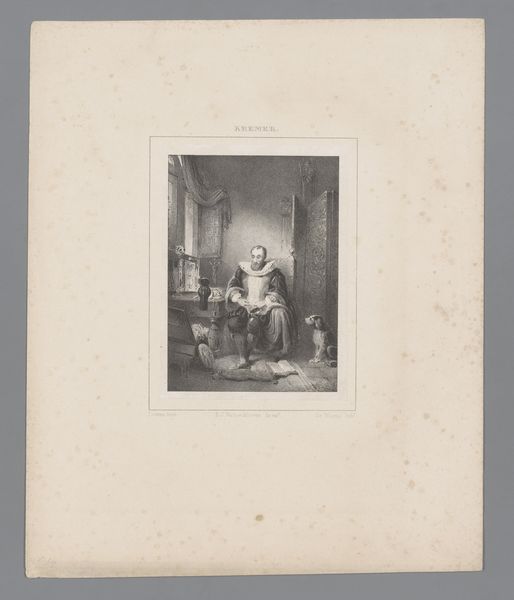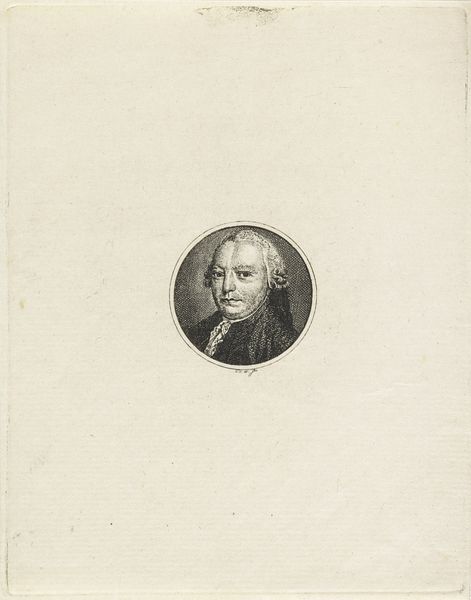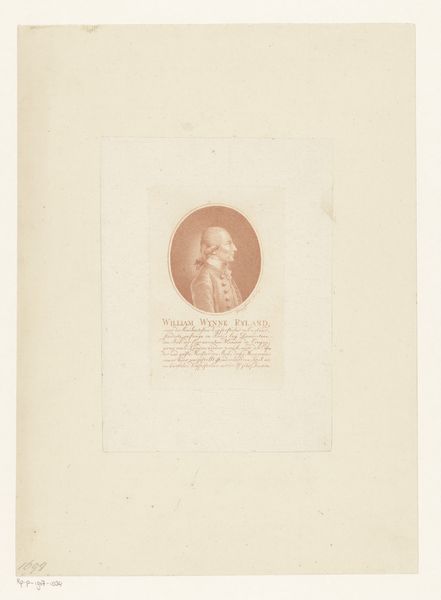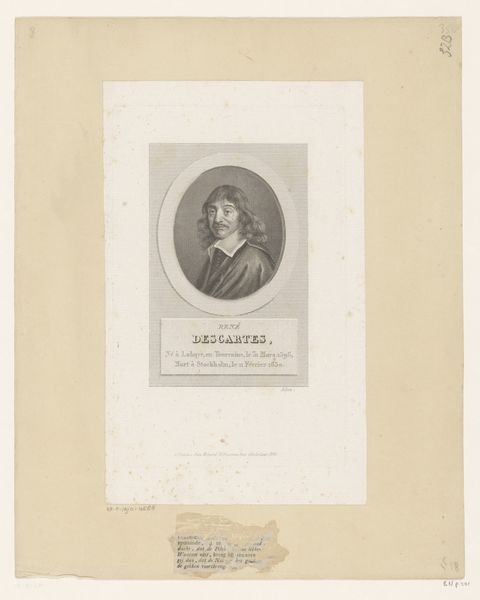
print, paper, engraving
#
portrait
#
neoclacissism
# print
#
paper
#
academic-art
#
engraving
Dimensions: height 243 mm, width 145 mm
Copyright: Rijks Museum: Open Domain
Editor: So, this is "Portret van Joan Melchior Kemper" made between 1814 and 1826 by Jacob Ernst Marcus, currently residing here at the Rijksmuseum. It's an engraving on paper. It has an imposing and almost severe feel. What do you see in this portrait? Curator: Immediately, I'm struck by the oval frame – a symbol of containment, but also of preciousness. It echoes classical cameos, signifying learnedness and elevated status. Consider Kemper's steady gaze, too. It doesn't invite intimacy. What could that firmness signal, do you think? Editor: Perhaps his role, some sort of leader? I am interested in how these images are made and shared, what they tell the viewer about power. Curator: Precisely. Engravings were often made to circulate ideas and perpetuate cultural memory. Think of the layering effect here. First, there's Kemper's likeness; then, the frame reinforcing importance; and finally, its replication allowing widespread access and affirming civic influence in the Neoclassical style. Each line carves Kemper into our shared history. How do you suppose its symbolic accessibility contrasts to the elite aura? Editor: I hadn't thought about it like that – mass produced to reinforce an ideal! Now that is a little less austere to consider the broader impacts. Curator: Exactly. An interesting portrait revealing how images shaped ideas. Editor: Agreed, I never really understood prints could be complex conveyors of memory.
Comments
No comments
Be the first to comment and join the conversation on the ultimate creative platform.
